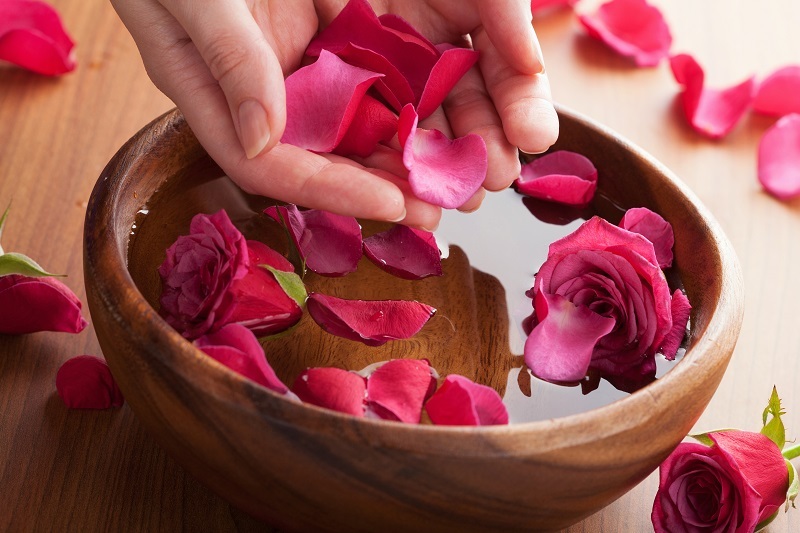Revealing the Secrets Behind Birth Month Floral Symbols
Posted on 13/08/2025
Revealing the Secrets Behind Birth Month Floral Symbols
Flowers have long played an important role in human culture--representing emotions, messages, and special dates. Among these traditions, birth month floral symbols stand out as one of the most cherished. Each month is associated with a specific flower, symbolizing the unique characteristics of people born during that time, as well as attributes believed to be influenced by the bloom itself. In this comprehensive article, we'll uncover the stories, legends, and meanings behind every birth month flower, providing an in-depth look into their origins and what they reveal about you.

The Origins and History of Birth Month Flowers
The practice of assigning flowers to each month didn't just appear overnight. In fact, its roots can be traced back centuries, drawing from various ancient cultures including the Romans, Greeks, and Victorian England. Many of these societies believed that certain flowers held mystical powers, could ward off evil, or bring good fortune to people born under their influence.
- Roman Birth Flora: The Romans often dedicated different flowers to their gods and goddesses' festivals held each month.
- Greek Mythology: Many birth month flowers correspond to Greek myths, with gods and mythical heroes often transformed into certain blooms.
- The Language of Flowers (Floriography): In the Victorian era, assigning meanings to flowers--known as floriography--gave deeper significance to the tradition.
Today, monthly birth flowers remain an endearing and widely recognized way to celebrate birthdays and personal identity. Let's journey through the calendar, one flower at a time.
Exploring Each Birth Month Floral Emblem
January: Carnation & Snowdrop
Primary flower: Carnation (Dianthus caryophyllus)
Alternative: Snowdrop
Symbolism: Love, fascination, distinction, new beginnings
The carnation stands out for its ruffled petals and array of colors, making it a popular choice in winter's chill. People born in January are believed to be steadfast, loyal, and passionate--just like the sturdy carnation, which endures cold weather. Snowdrops, with their delicate blooms peeking through the frost, signify hope and rebirth.
February: Violet & Iris
Primary flower: Violet (Viola spp.)
Alternative: Iris
Symbolism: Faithfulness, modesty, wisdom, and spiritual insight
February's floral emblems are understated but rich in meaning. The violet speaks to humility and eternal loyalty, aligning with the symbolism of the month of love. Iris evokes messages and communication--just as February bridges the darkest days of winter with the coming of spring.
March: Daffodil & Jonquil
Primary flower: Daffodil (Narcissus)
Alternative: Jonquil
Symbolism: New beginnings, prosperity, rebirth, and hope
March birth flowers echo the arrival of spring. The daffodil springs up as a beacon of hope, suggesting optimism and creative renewal for March-born individuals. In some cultures, a bouquet of these bright yellow flowers is said to guarantee happiness.
April: Daisy & Sweet Pea
Primary flower: Daisy (Bellis perennis)
Alternative: Sweet Pea
Symbolism: Innocence, purity, and new adventures
Daisies signify playfulness and clarity, capturing the refreshing spirit of April. The Sweet Pea, with its intoxicating fragrance, embodies pleasure and graceful departure--often given as a token of thanks or bidding farewell.
May: Lily of the Valley & Hawthorn
Primary flower: Lily of the Valley (Convallaria majalis)
Alternative: Hawthorn
Symbolism: Humility, sweetness, and the return of happiness
The enchanting Lily of the Valley graces woodlands in May, representing renewed joy and serenity. Hawthorn branches bloom with delicate white or pink blossoms, reinforcing themes of hope and contentment.
June: Rose & Honeysuckle
Primary flower: Rose (Rosa spp.)
Alternative: Honeysuckle
Symbolism: Love, passion, devotion, and beauty
The iconic rose has deep roots in poetry and art, epitomizing deep affection and admiration. June-borns are said to possess a romantic spirit. Honeysuckle vines, with their sweet scent, echo the theme of steadfast bonds.
July: Larkspur & Water Lily
Primary flower: Larkspur (Delphinium)
Alternative: Water Lily
Symbolism: Lightness, positivity, and an open heart
Larkspur comes in shades of purple, blue, pink, and white, each symbolizing a specific sentiment--grace, joy, and the blessings of lightness of being. Water Lilies, floating serenely, represent purity and peace.
August: Gladiolus & Poppy
Primary flower: Gladiolus (Gladiolus hortulanus)
Alternative: Poppy
Symbolism: Strength, integrity, remembrance, and sincerity
August-borns are associated with the tall and striking Gladiolus, which stands for moral integrity, strength, and admiration. Poppies, with their vivid colors, symbolize peace and imagination.
September: Aster & Morning Glory
Primary flower: Aster (Aster amellus)
Alternative: Morning Glory
Symbolism: Wisdom, elegance, and affection
Described in myths as enchanted stars fallen to earth, asters signify love with patience and understanding. Morning Glories, that unfurl as the sun rises, hint at renewed energy and simple pleasures.
October: Marigold & Cosmos
Primary flower: Marigold (Tagetes)
Alternative: Cosmos
Symbolism: Warmth, creativity, and determination
Marigolds are bright and enduring, symbolizing enthusiasm, creativity, and protection. In some cultures, they honor the dead, connecting October-borns with themes of remembrance and resilience. Cosmos represent harmony and peace.
November: Chrysanthemum
Primary flower: Chrysanthemum (Chrysanthemum morifolium)
Symbolism: Friendship, honesty, and cheerfulness
Chrysanthemums bloom fiercely even as colder months approach, making them a prime emblem for November. They symbolize loyal companionship and lasting friendship, ideal for those born as the world transitions to winter.
December: Narcissus & Holly
Primary flower: Narcissus (Narcissus papyraceus)
Alternative: Holly
Symbolism: Hope, renewal, good wishes, and protection
December's birth flower, especially the paperwhite narcissus, carries meanings of good fortune and fresh starts. Holly's evergreen nature reinforces resilience and enduring joy.
How to Incorporate Birth Month Flowers into Celebrations
Learning about birth month floral symbols makes birthdays and life milestones all the more special. Here are some creative ways to use these unique blooms:
- Personalized Bouquets: Select flowers dedicated to the recipient's birth month for a meaningful arrangement.
- Jewelry & Keepsakes: Many designers now create necklaces, bracelets, or charms featuring representations of these flowers.
- Home Decor: Artwork, prints, and embroidered pillows with monthly birth flowers can be stunning decor pieces.
- Gardening: Plant your birth flower in your garden - enjoy its symbolism all year round!
- Traditional Gifting: Use birth month flowers for milestone celebrations including anniversaries, Mother's Day, or career achievements.
The Psychological and Cultural Significance of Birth Month Flowers
Why do birth month birth flowers resonate so deeply? Flowers have a universal language, and their association with our identity merges botanical beauty with personal symbolism. In some cultures, giving someone their birth flower is believed to bring luck, protect against negativity, or even attract love and prosperity.
Moreover, the tradition connects us to nature and belonging--reminding us that, much like the changing months and ever-blooming gardens, we are all unique, seasonal, and continuously growing.
The Secret Language: Hidden Meanings and Legends
Many monthly floral symbols are shrouded in fascinating myths. For instance:
- Narcissus: Named after the Greek youth who fell in love with his own reflection, this flower offers a lesson on humility and self-reflection.
- Lily of the Valley: In Christian tradition, it's known as the "Our Lady's Tears" flower, symbolizing humility and purity.
- Marigold: In Mexico, marigolds guide spirits back for Dia de los Muertos, bridging the living and the departed.

Birth Flower Colors and Their Impact
Did you know? The color of a birth month flower can further influence its meaning. For example, red carnations (January) denote love, while white signify luck. Roses (June) come in colors signifying everything from friendship (yellow) to desire (red) and innocence (white).
Choosing the Right Floral Gift
Consider both the flower and its hue to craft a personalized, sentimental gift packed with intention. Paying attention to these details reveals a level of care and thoughtfulness that simple gift-giving often lacks.
Final Thoughts: Embrace Your Birth Month Flower
The captivating tradition of birth month floral symbols offers a window into our history, our cultures, and--most importantly--ourselves. Whether you're commemorating a birthday, searching for the perfect personal gift, or simply looking to deepen your connection with the natural world, learning about your birth month flower is a delightful journey into symbolism and self-discovery.
Explore your birth month's floral emblem, and let its subtle beauty infuse your celebrations with meaning, charm, and a touch of ancient magic.
- Honor your individuality by discovering your unique birth flower
- Celebrate special moments with the language of flowers
- Create lasting memories with meaningful, symbolic gifts
Let these timeless birth month floral symbols serve as daily reminders of the beauty within you--and the blossoming wonder of each new season in life.





